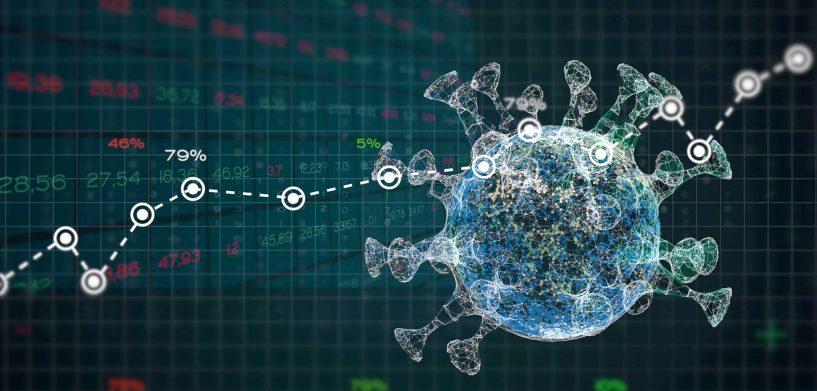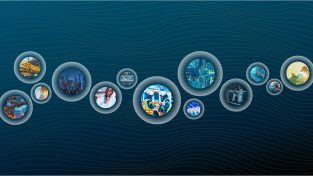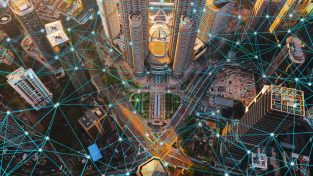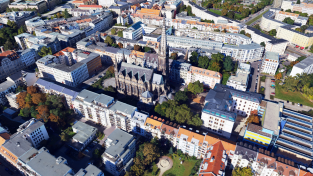Putting location intelligence data to work can aid reaction, response, recovery and review in this unprecedented scenario.
As COVID-19 continues to spread worldwide, uncertainty has sparked historic volatility in the global markets and inspired drastic measures at national, regional, and local levels as the world tries to contain this pandemic.
As a global health crisis persists, information on where the virus has been contracted and where it’s currently concentrated is critical to understanding where it may spread next. The Center for Systems Science and Engineering (CSSE) at Johns Hopkins University is tracking this data, which is in the public domain for use among many sources, such as the New York Times.
A team within Hexagon’s Geospatial division developed an interactive map on the Smart M.App platform to display updates from the Johns Hopkins data. At present, this map shows COVID-19 data that can be viewed and analyzed in real time. Smart M.App’s ability to layer on any data and information available can help make sense of this dynamically changing scenario and target the crisis with location intelligence.
For example, aerial imagery from the HxGN Content Program covering the United States and Europe has been made freely available for government agencies and non-profit organizations managing the COVID-19 outbreak. The imagery can be used to create maps, spatial data products and geo-information for those responding to national emergencies.
“With the release of this high-accuracy aerial imagery, our hope is it will be used as a key source of information for effective response by authorities and others working to contain and treat the virus,” said John Welter, President, Geospatial Content Solutions, Hexagon’s Geosystems division.
The exceptionally high resolution and accuracy of the aerial data provides detailed views of building and objects down to street level, allowing first responders, healthcare departments and GIS professionals to make faster and more informed decisions during emergencies. The data can be used to assess the situation, visualize the scope of affected areas, plan coordination efforts and improve responses for swifter action, and ultimately, recovery.
The combination of multiple data sources could potentially provide the ability to get a handle on the coronavirus outbreak. For instance, cities could use available sensor data that tracks movement in public places. This would enable them to layer historical data on a map with real-time information and compare it against the spread of confirmed coronavirus infections to give them better insight to how lockdowns are faring.
“If we had that data, we could generate a two-meter buffer around the track and determine intersections in time and space with other people,” said Uwe Jasnoch, Vice President of Business Development, with Hexagon’s Geospatial division. “That would help us understand the chain of infection and most probably help breaking that chain.”
In South Korea and Singapore, areas that have been heralded as highly effective in controlling outbreaks of the coronavirus, data from “contact tracing” has helped mitigate the spread. The New York Times reported that health officials in South Korea have retraced patients’ movements using surveillance methods that include security footage, credit card usage and even GPS data.
According to the Financial Times, Singapore recently launched an app called TraceTogether, for which citizens provide permission for the government’s health ministry to track their distance from each other and the duration of how long they are in contact. The FT reported that this data is encrypted, and then deleted after 21 days.
In both South Korea and Singapore, experiences with MERS and SARS outbreaks, respectively, provided frameworks for managing COVID-19. Data intelligence will not only help us fight further outbreaks of the coronavirus, but also will aid in whatever recovery eventually looks like — and provide critical insight to approach future pandemic responses.
As an example of how the data we are collecting now can be layered and utilized, the University of Leuven in Belgium used Hexagon’s Luciad platform in 2017 to visualize, analyze and filter Hepatitis C (HCV) migration in space and time over a 100-year period on a geographic map and time filter.
It’s difficult to imagine the total impact that COVID-19 will have, but putting data to work can help us see the effects and act in real time to control this crisis. Regardless of where we end up, location intelligence can deliver a better understanding of its spread and give hope for controlling future outbreaks of this disease and others.

















